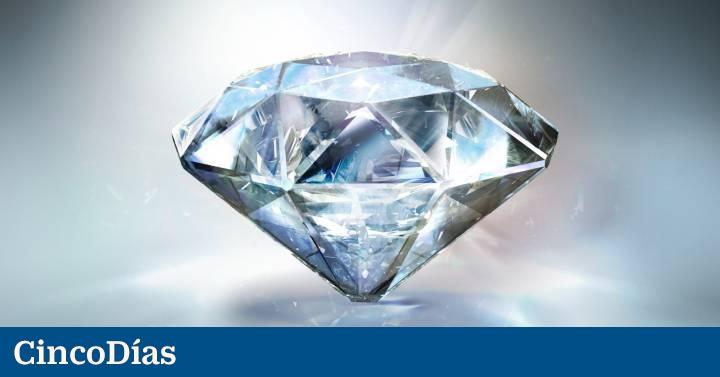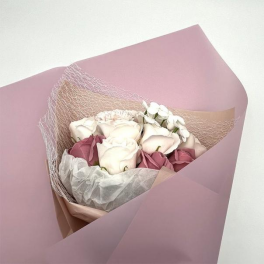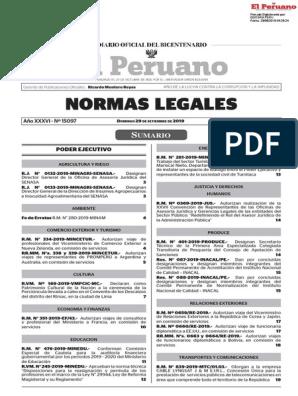Luxury: myth and reality of its armor in crises
When times of serious turbulence in the economy arrive, investors tend to turn to what are considered safe haven securities in search of shelter in the midst of the catastrophe. Gold, the German bond or the Japanese yen are some of the safe havens par excellence. For its part, the luxury sector is also famous for resisting particularly well in times of difficulty. The coronavirus, the tight supply chains and now the sharp rise in prices have been the perfect scenarios to see to what extent its reputation for great resistance is justified. In global terms, it can be said that the luxury sector has well deserved this medal, but it is true that it should be pointed out.
Luxury is a sector that encompasses very different activities with heterogeneous business models. Sandra Andújar, president of Elite Excellence-Spanish Federation of Luxury, breaks down how the different aspects have responded. In the Spanish high-end real estate industry, there is an upturn in both private buyers and investors in areas considered premium. Mainly, the appetite is focused on the coast, on islands and in cities like Barcelona or Madrid. This boom has occurred with a smaller presence of large private foreign capitals, which, according to Andújar, lost weight due to the restrictions of the pandemic and are expected to return to the market soon.
Although it is true that foreign individuals in some cases continued to buy even online, the markets that have been most affected are those of the purchase of Golden Visa homes. That is, nationals of, for example, Russia or China who obtain a residence visa in Spain for purchases of real estate with a value greater than 500,000 euros.
In cosmetics, there has been an uneven behavior. Facial cosmetics have responded very well, but not so much lipstick or perfume. The luxury hotel sector is largely dependent on business travel; specifically, it represents 45% of its activity. “The forecast for 2022 is being positive, but not reliable, since the operations are not confirmed until the earliest date due to possible increases in infections,” Andújar says in this regard.
In reference to mobility, the expert speaks of a historic rebound in the segment of yachts and private jets. The furniture industry has resisted well by spending more time at home and wanting to adapt it better. However, clothing and watches have been greatly impacted by their high social component.
Even with this uneven resistance depending on the activity, the titans of luxury have more than recovered from the successive problems so far. LVMH, the largest conglomerate in the luxury world, has seen its shares rise 76% from December 31, 2019 to last Wednesday. Even in the midst of the chaos generated by the pandemic, it has almost doubled its value on the stock market. It is by no means an exception within the sector. Hermès reaps a rise of 134% in the same period; L'Oréal, 62%, and Kering, a not inconsiderable 20.7%, which, however, languishes compared to the performance of its peers. Corroborating Andújar's words about the worst performance in the segment, the famous Swiss watchmaker Swatch has gained 3.9% on the Stock Market since December 30, 2019.
A report on luxury produced in early December by the consulting firm McKinsey describes the situation. “A small group of leading brands are matching and in some cases surpassing their pre-pandemic performance. This should not be confused with a universal return to normality in the sector. A large number of companies will continue to struggle to create value and in some cases to directly survive as the tentacles of the crisis spread.
model melting pot

In addition to activities, the variety is also present in terms of the very conception of the business model. The debate between exclusivity and popularization has been going on for years.
“Within luxury there is a wide range of possibilities that are not mutually exclusive and survive in line with the rest, since accessible, intermediate and inaccessible or upper-luxury luxury coexist. For example, luxury textile garments have been flirting with the low cost world for years, and Karl Lagerfeld already demonstrated this in 2004, when he agreed to a collaboration with the Swedish company H&M or when the Kaiser presented the Chanel parade at the Grand Palais turning it into a luxury supermarket in 2014. All of this broke the schemes of what many considered luxury, but we must not forget that high-end firms, including textiles, constantly reinvent themselves”, affirms the director of Elite Excellence -Spanish Federation of Luxury.
Why does luxury resist?
Although, as explained above, it does not resist in the same way everywhere, a good response is observed in the large ones. For Andújar, this resistance is due to a combination of factors. The first is that aforementioned perception of being a refuge value in times of crisis. “We also see that investment groups take advantage of moments of economic earthquake to detect great opportunities and take advantage of the increase in available product. The financial pressures of companies that cannot sustain themselves are alleviated, while investment funds have greater financial muscle and liquidity. It has been an interesting year in terms of mergers and acquisitions”, says the expert.
Another factor, perhaps the most obvious, is that the highest incomes are not so affected by the ravages of recessions. "It is very significant that the 20 largest fortunes increased by 24% compared to 2019 and, according to Credit Suisse, it is expected that in 2025 there will be 1.8 million ultra-rich in Spain," says Andújar.
Another factor is known as revenge buying. “It is added that after a time of suffering a consumption of personal reward or consumption for revenge is generated. That is, pamper yourself as a balm that helps to overcome emotionally. A clear example was that of the Second World War with the acclaimed new look of the Christian Dior firm or, as we have seen recently, after the pandemic weariness of firms such as LVMH, Hermès or the Kering Group, which have increased their sales in very specific products” , lists Andújar.
The diversity of the luxury sector also plays a very important role. The McKinsey report reveals that geography has been key. While the Asian market has recovered more forcefully, the European market still has a harder time. Finally, Andújar mentions digitization, which allows access to purchase despite restrictions and closure of establishments.
Gold chains
Tight supply chains have not been unheard of in the luxury industry either. An example would be fashion logistics. “The fashion industry relies on an intricate system of global interconnections that has been subjected to unprecedented levels of stress and disruption. With bottlenecks, rising transportation prices, and shortages of many kinds adding new layers of complexity, companies must rethink their supplier strategy. In the long term, firms will have to balance the desire to improve the speed with which their products get to market against the pressure that this places on logistics. This may mean streamlining production, logistics planning, and back-up capabilities, as well as putting in place contingency plans and alternative suppliers, while remaining as agile and flexible as possible. .
According to the report Road to the relaunch of the Italian textile and clothing chain, prepared for the Government of that country by the Federazione Tessile e Moda, fashion in particular and luxury in general should in the future adapt their logistics mainly in two aspects . First, bring back to the final consumer markets those production phases that were once associated with low added value. In other words, relying less on distant production sites in pursuit of greater security in the supply chain and a greater presence of technology and care for the environment.
And second, learn to better manage deliveries to build customer loyalty. For the Federazione, this means better adapting to peaks and slumps in demand such as those that arose in the pandemic by using a logistics system with lower volume shipments, but more frequent and precise in time.
Despite these difficulties that part of the sector suffered like the rest of mortals, once again, luxury has characteristics that have made it resist better. Andújar gives details, and it is the opposite path to that followed by other industries such as, for example, the bulk of the automobile industry. “The big European luxury brands and luxury conglomerates have been absorbing what were their external suppliers and artisans for some time now, who are now part of their production chain and work exclusively for them. It not only benefits these, since continuity is guaranteed, but the firms thereby control quality, are more sustainable, acquire speed and ensure the supply of raw materials. This is not new, but it is on the rise”, comments the expert. "Chanel began its vertical integration in the 1980s and we continually see it in firms such as Loro Piana, Brunello Cucinelli or Zegna, which increasingly control their value chain since its inception," he illustrates, before warning that the situation is different for the high-end and premium, since it is supplied from external manufacturers and far from its borders.
"In the case of hotels, large chains suffer less than independent hotels, especially when it comes to perishable food products, because basic goods are increasingly being purchased through local suppliers," concludes.
How do you respond to high inflation?
Margin. Andújar says that the upper-luxury can afford the price increase without losing interest on the part of the buyer and thus readjusting its profit margin. “A recent case is the firm Chanel, which has increased the prices of its most coveted and iconic bags by up to 17%, such as the 2.55 model. They are products that not only are not devalued, but are revalued over time”.
The wait. “In the event that the supply crisis causes a longer wait to enjoy a product, this is not a handicap, since one of the characteristics of luxury is its inaccessibility and scarcity, which would make it even more desirable”, Andujar says.


